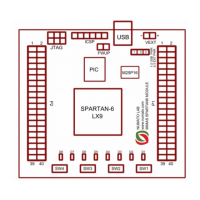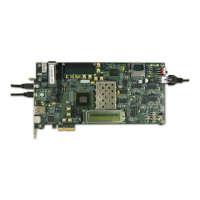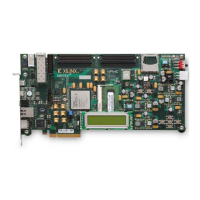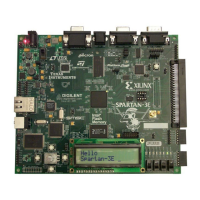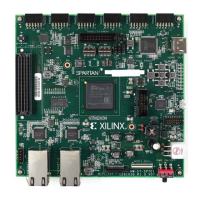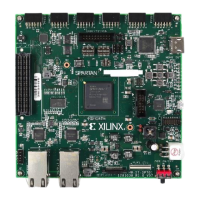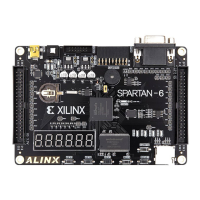56 www.xilinx.com Spartan-6 FPGA PCB Design and Pin Planning
UG393 (v1.1) April 29, 2010
Chapter 5: Design of Transitions for High-Speed Signals
P/N Crossover Vias
Some transceivers offer the ability to independently switch the polarity of the transmit and
receive signal pairs. This functionality eliminates the need to cross over the P/N signals at
the board level, which in turn significantly enhances signal integrity. If possible, P/N
crossover vias are to be avoided and the polarity switch of the transceiver should be used.
SMA Connectors
Well-designed SMA connectors can reduce debugging time and allow a high-performance
channel to be designed correctly on the first pass. SMA connectors that perform well at
10 Gb/s need to be simulated, designed, and manufactured to meet this performance
target. Vendors can also offer design services that ensure that the connector works well on
a specific board. Assembly guidelines are crucial in ensuring that the process of mating the
connector to the board is well-controlled to give the specified performance.
Xilinx uses precision SMA connectors from Rosenberger and other precision connector
manufacturers because of their excellent performance and because of the points listed in
the previous paragraph.
Backplane Connectors
There are numerous signal integrity issues associated with backplane connectors
including:
• P/N signal skew
•Crosstalk
• Stubs due to connector pins
Some connector manufacturers offer not only S parameters, models, and layout guidelines
for their connectors but also design support, seminars, and tutorials.
Microstrip/Stripline Bends
A bend in a PCB trace is a transition. When routing differential traces through a 90° corner,
the outer trace is longer than the inner trace, which introduces P/N imbalance. Even
within a single trace, signal current has the tendency to hug the inside track of a corner,
further reducing the actual delay through a bend.
To minimize skew between the P and N paths, 90° turns in microstrips or striplines are
routed as two 45° bends to give mitered corners. The addition of a jog-out also allows the
trace lengths to be matched. Figure 5-16 shows example bends in traces.

